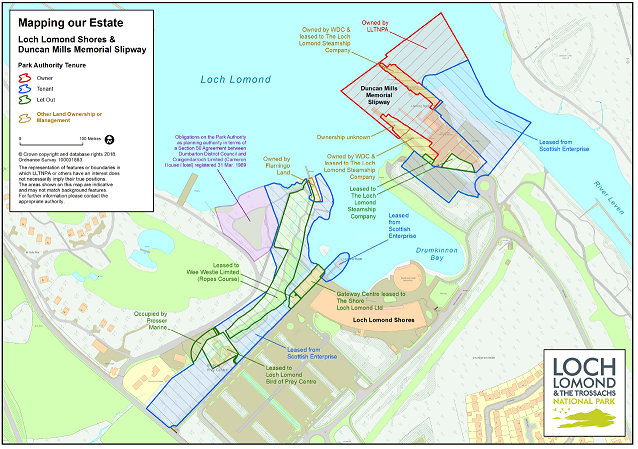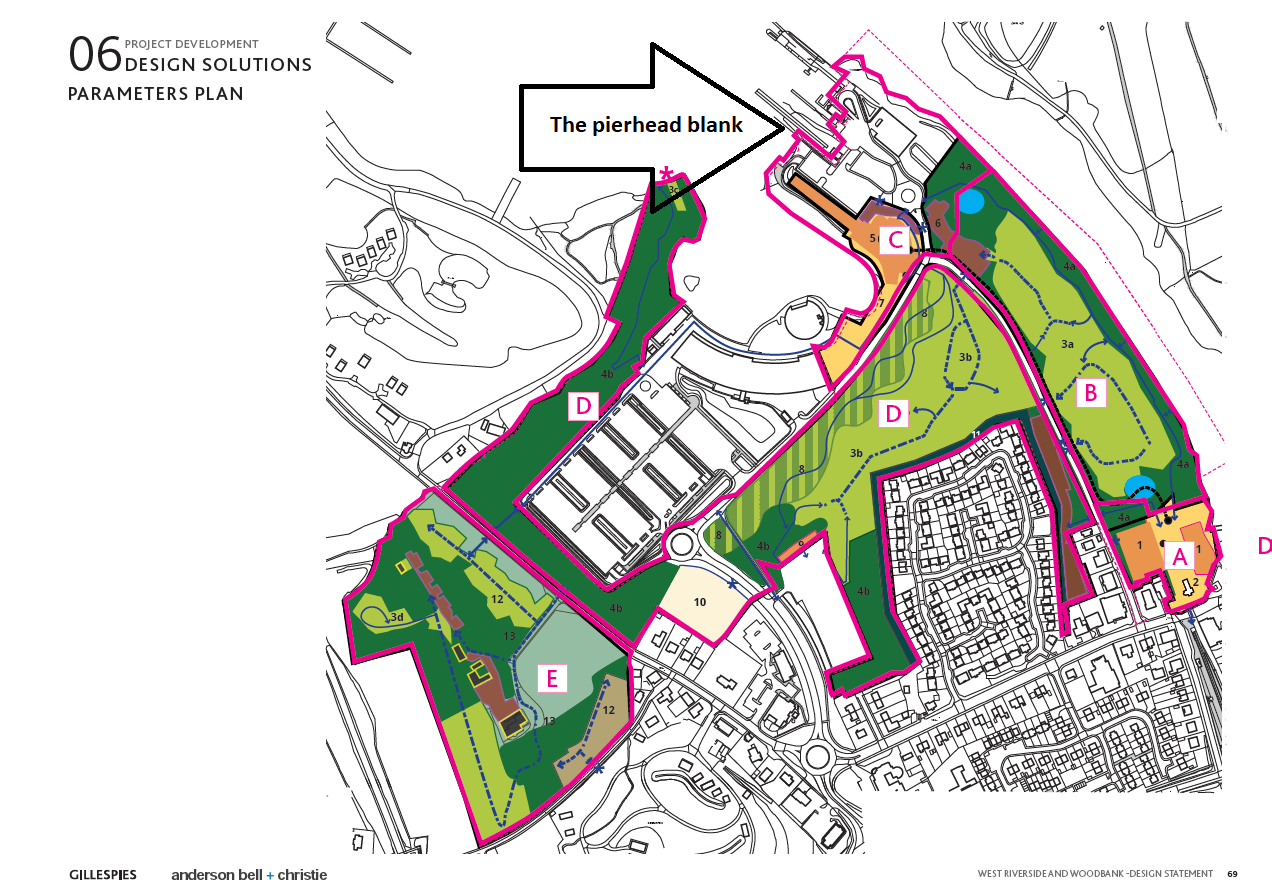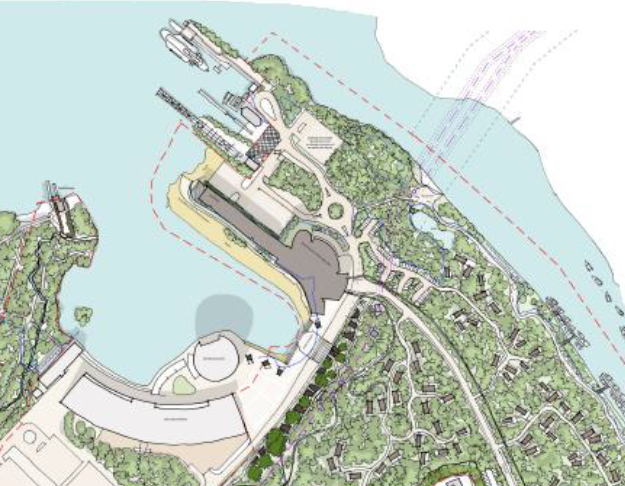Scottish Enterprise’s decision to make a joint planning application with Flamingo Land at Balloch, with a view to selling off the publicly owned gateway to the National Park for private profit, is looking increasingly foolhardy. First Scottish Enterprise included the Loch Lomond and Trossachs National Park Authority, the body that has to decide the planning application, on the interview panel which appointed Flamingo Land. That should invalidate the entire process and require it to be called in by the Scottish Government. Now, its emerged that Scottish Enterprise have allowed Flamingo Land to include land OWNED by the LLTNPA in the Planning Application without consulting them. This puts the LLTNPA in a very difficult position.
The paper being presented to the LLTNPA Board on Monday about the process for deciding the Planning Application (see here) fails to address these issues. This post takes a look at what’s going on and asks whether the change of policy direction Scottish Enterprise announced this week will have any impact on Flamingo Land.
The bungled Planning Application – the inclusion of LLTNPA land without their permission
It took me ten months to realise that part of Scottish Enterprise’s and Flamingo Land’s Planning Application for the Riverside Site at Balloch, first submitted in May 2018, covers lands OWNED by the Loch Lomond and Trossachs National Park Authority in the pierhead area.

Responding to an information request on the subject (see here), it turns out that the LLTNPA did not realise land they owned at the Pierhead was included either:
“The Planning Officer became aware of the inclusion of occupied by the Park Authority and requested further information about this from the agent, in the letter sent on 8th August 2018 to request further information.”
Unfortunately, I have been unable to find that letter on the Planning Portal and have asked the LLTNPA for a copy.
Under Planning law, anyone can submit a Planning Application for any bit of land BUT they need to inform the landowner. The original Planning Application submitted last May (see here) includes a declaration that Flamingo Land had identified and informed all the owners who land was included but only lists West Dunbartonshire in the appropriate section. I have little doubt therefore that the LLTNPA was NOT informed initially that some of their land was included within the Planning Application boundary. Despite being alerted to this last August, Flamingo Land and Scottish Enterprise then failed to serve appropriate notice on the LLTNPA that their land was included in the proposed development until they submitted the revised Planning Application on 5th April 2019. Had the LLTNPA objected, that could have invalidated the entire consultation on the original Planning Application.
So what is Scottish Enterprise proposing for the land owned and leased by the LLTNPA?
Unfortunately, its far from clear what is being proposed for the land owned by the LLTNPA. The ownership boundary is complex – which is no doubt why LLTNPA staff failed to appreciate land they owned was included in the application – but what Scottish Enterprise and Flamingo Land are proposing for the Pierhead area in their Planning Application in Principle lacks any detail:

The Design and Access statement contains almost no words about what is proposed for the pierhead area, apart from the retention of the parking spaces which currently blight the area. The most I can find is from the illustrative masterplan:

UNLESS the Planning Application clearly states WHAT is proposed for the land the LLTNPA owns and leases, and also confirms that the LLTNPA has granted their consent to this, its hard to see how they could take any decision about the Planning Application in principle.
So what is the LLTNPA saying about this?
The paper to the Board Meeting on Monday is meticulous in most details, presumably in an attempt to avoid creating any further grounds on which the whole process could be challenged (see here). It proposes a Board site visit and a Hearing – in which the public can put their views – before a special Board Meeting to determine the application. The earliest this is likely to happen is late summer. It also also helpfully confirms that the statutory aims and various plans of the National Park are all material considerations that should be considered in determining the Planning Application.
The paper also mentions the land the LLTNPA owns and leases:
“It should also be noted that a small area of the application site, next to the Duncan Mills Memorial Slipway at Pier Road, is under the ownership of the National Park Authority. The Park Authority also has other interests within the application site as it occupies and sub-leases other areas. Planning law allows applications to be made on land not owned by the applicant provided the necessary notifications to other parties have been made. The Park Authority’s ownerships and other interests as stated above are a separate matter from its duty and responsibilities as a planning authority to consider the planning merits of the proposals in its determination of the application.”
What the paper fails to say is how the LLTNPA is going to take a decision about this “separate matter” – the land that they own and lease – and whether they agree to this being included in the Planning Application. That is an extraordinary omission and the paper leaves the public totally unclear about whether or how the LLTNPA Board will be asked to take a decision about this. That is despite the Scottish Enterprise and Flamingo Land’s Planning Application stating that their proposals for the pierhead area is “under discussion with stakeholders”. So, clearly LLTNPA staff – which? – are involved in deciding what is appropriate, they have just failed to inform the Board. This decision need to be made in public by the full Board.
While the paper to the Board tries to play down the importance of the area the Park owns as “a small area” it appears CRUCIAL to the whole viability of the hotel/leisure complex as it backs onto it. Flamingo Land’s “concept” is based on more parking and cars. If for example, the LLTNPA agrees to some of their land being used for further parking spaces for the hotel, they will not only have prejudged the Planning Application in Principle. They will also be contributing to the further traffic chaos – and associated increase in carbon emissions – that the development will create.
The land the LLTNPA owns – on behalf of the public – could also play a crucial role in the development of alternatives to Flamingo Land. The pierhead, while currently blighted, is of considerable historic interest with its listed buildings and offers considerable potential. For example, a museum/cultural centre set back from Loch Lomond and the River Leven would in my view be a far more appropriate development to Flamingo Land. The LLTNPA therefore has considerable power as landowner to influence the Application and force through changes appropriate for a National Park. So, far its senior staff have shown no signs of wanting to do this. The LLTNPA Board now needs to grasp that nettle before proceeding any further with the Planning Application.
A change of direction by Scottish Enterprise

Meantime, Scottish Enterprise has announced a change of direction in its new corporate strategy (see here) which has been approved by the Scottish Government
“More of the same economic development will, at best, deliver more of the same economic outcomes. And inequalities will remain.”
One might ask how does selling off public land on the cheap and entering secret Exclusivity Agreements with Flamingo Land fit with the values presented in the Strategy? While it makes not a single mention of tourist developments, there is much in the document that has implications for Scottish Enterprise’s support up till now for Flamingo Land:
- How does their newly announced support for the Scottish Living Wage fit with their admission that the Scottish Living Wage paid no part in their decision to the tender process which led to Flamingo Land’s appointment? Now that Flamingo Land has announced a belated conversion to the Scottish Living Wage for any people it might employ at Balloch, how will Scottish Enterprise ensure that this will also apply to contractors over whom Flamingo Land wrongly claimed to have no control (see here)?
- How does Scottish Enterprise’s commitment to tackle businesses carbon footprint fit with the proposals in their Planning Application for Balloch, including those to increase the number of cars coming to the village?
- How does Scottish Enterprise’s commitment to working in partnership and to unlock the potential of local communities fit with the way it has shamelessly ignored the LLTNPA’s interests as landowner on the Riverside Site and failed to engage with the local community at Balloch?
One could go on. This is not to say there are not some gaps in the strategy. The natural environment is not mentioned at all and not seen as an economic resource. The Strategy is, however, a major improvement on what has gone before and one of the commitments is that:
“we will celebrate success and learn from our mistakes.”
The new Strategy provides the perfect opportunity for Scottish Enerprise to acknowledge that their appointment of Flamingo Land as preferred development for the Riverside site has been a massive mistake and to start again.
What needs to happen
The Flamingo Land development proposal is a good example of how Public Authorities in Scotland have been wedded to supporting business interests (justified by the claim that this will bring much needed jobs). Low pay and destruction of the natural environment have been just two of the consequences of unconditional support for business.
Scottish Enterprise’s change of policy direction could enable the LLTNPA Board to challenge them about their approach to Flamingo Land and demand alternatives which meet the statutory objectives of the National Park. While their are good arguments for this on policy grounds, both their own and that of Scottish Enterprise, the LLTNPA Board could, if need be, use their power as landowner to force Scottish Enterprise to re-think their entire approach to Balloch.
One of the big problems is that Scottish Enterprise is too wedded to the project, they don’t see the problems and don’t want to loose face. LLTNPA will be put under considerable behind the scenes pressure to not stand in the way. There is an analogy with HIE and CNPA. HIE appear to be totally committed to throwing £10M+ at repairing the funicular and going ahead with their fanciful and foolhardy vision of turning Cairn Gorm into a Disney theme park. Will CNPA stand in their way?
I had a smile at Scottish Enterprises new Values. My take on them is:
– Be Brave – no it should be Be Reckless (with public money). I see no evidence of these agencies (especially HIE) learning from their mistakes, instead they just gloss over them
– Be The Difference – no it should be Collude with Developers…and don’t listen to the local community…we (Scottish Enterprise) know better
– Be Fair – yes as long as people agree with them. Oh dear then there is that word “sustainability” the most misused word by public bodies
– Be Our Best – hmm…they’ve a long way to go!
–
In Grangemouth the Scottish government has allowed ineos to ignore safe noise levels so that developers might not be put off .